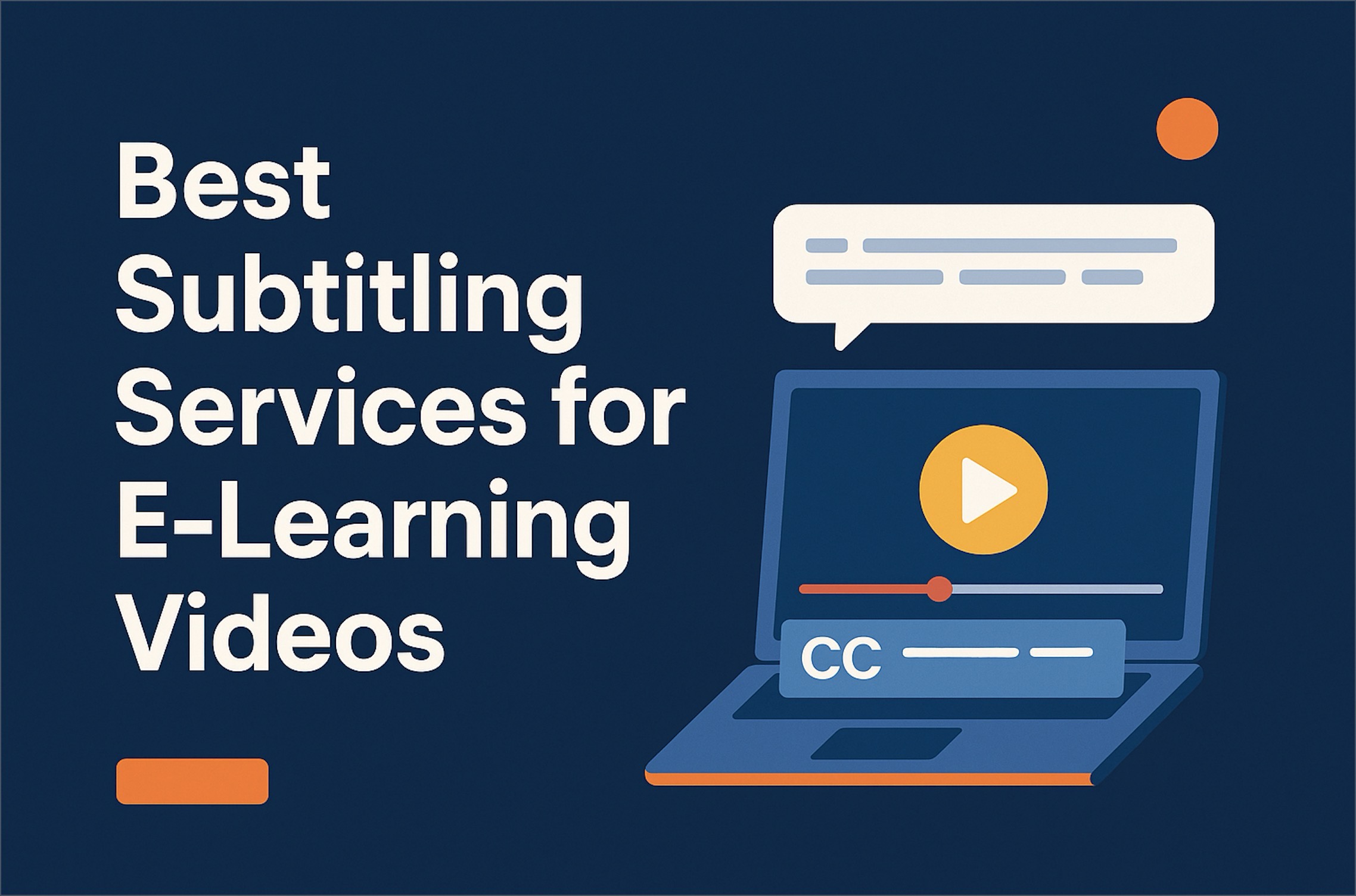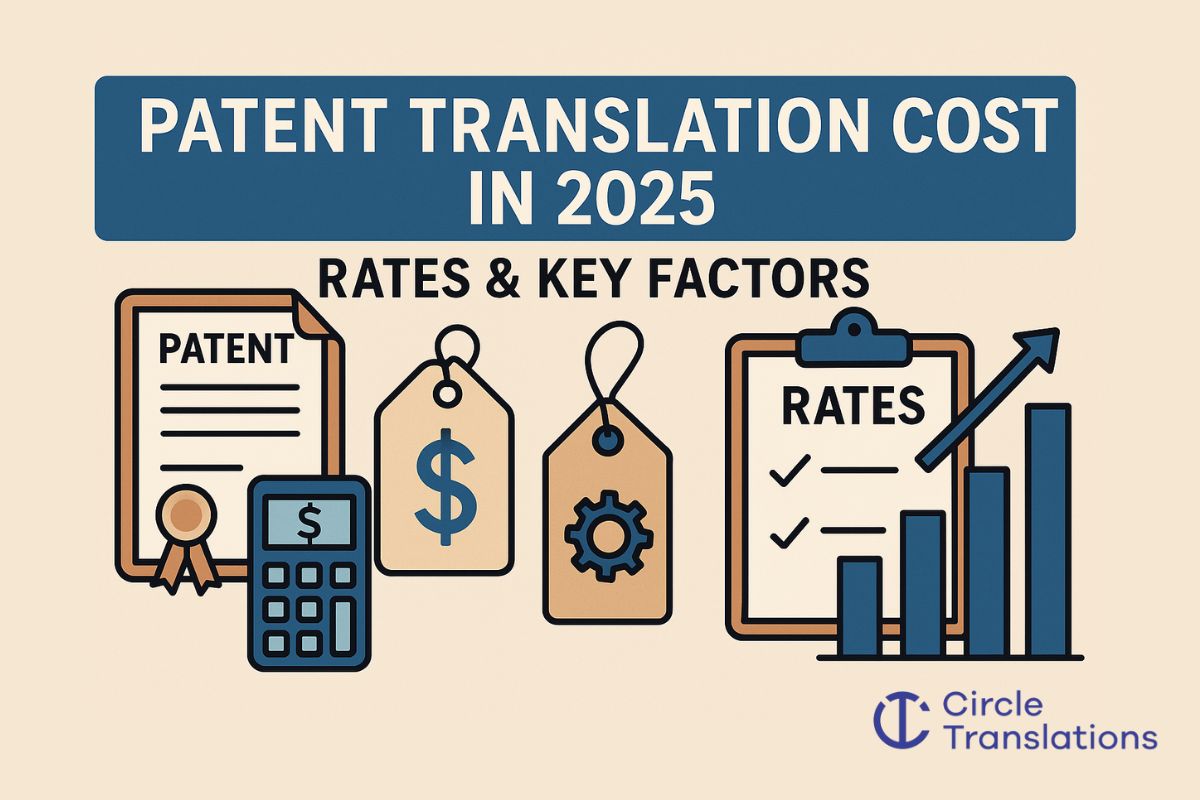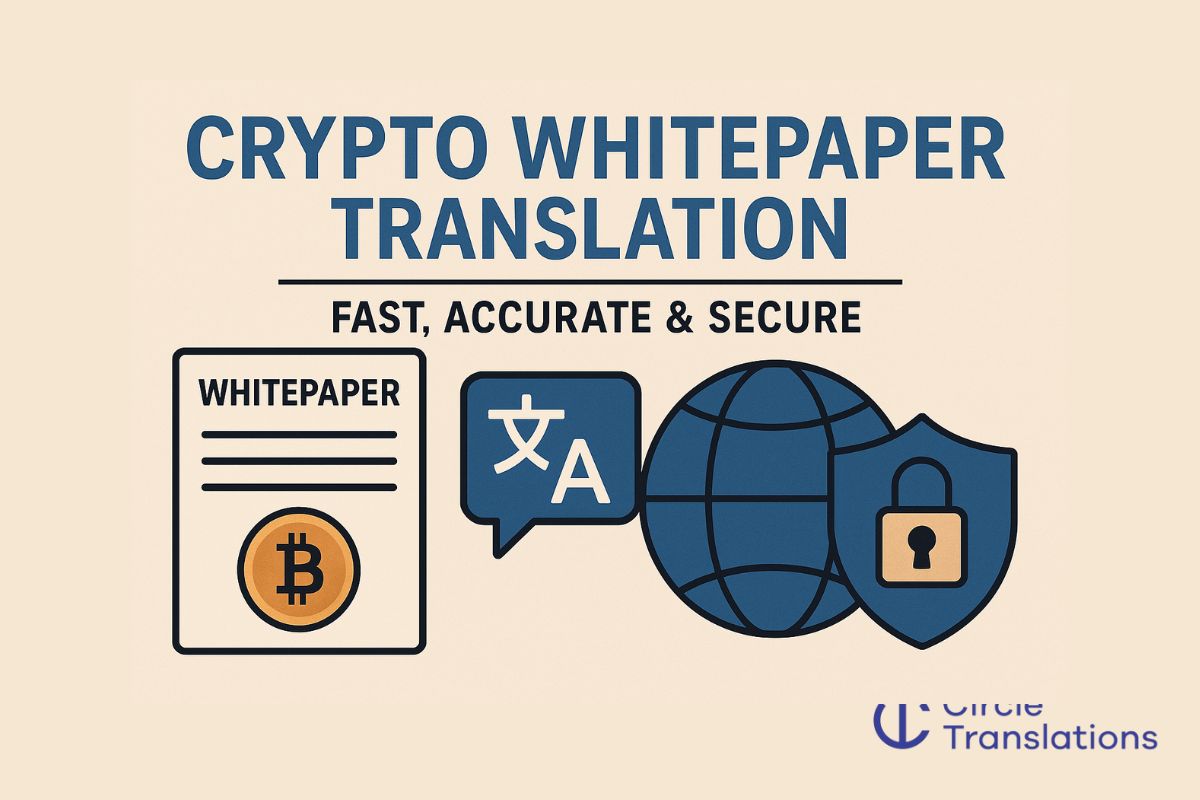As digital learning becomes the norm, the demand for accurate and accessible content has never been higher. Subtitling services for e-learning play a critical role in making training videos, webinars, and online courses more inclusive, especially for global learners and those with hearing impairments.
Professional e-learning subtitles are different from basic captions. They ensure precise timing, accurate terminology, and support for multiple formats like SRT and WebVTT.
This level of quality improves learner comprehension, boosts engagement, and meets key accessibility standards such as WCAG 2.2.
Whether you’re rolling out multilingual training across your enterprise or publishing educational content through an LMS, subtitles help ensure clarity, compliance, and better learning outcomes.
In this guide, I will explain what makes a great e-learning subtitling service, how pricing works, and why quality subtitling is a must-have for modern L&D teams.
Why Accurate Subtitles Matter in E-Learning
In the world of digital education and corporate training, accurate subtitling services for e-learning are a fundamental requirement.
As more organizations turn to video-based learning across Learning Management Systems (LMS), subtitles are essential for ensuring both comprehension and accessibility.
E-learning subtitles serve a very different purpose than the ones in entertainment.
They are about reinforcing educational content, guiding learners through structured material, and ensuring no critical information is missed, whereas entertainment subtitles are solely for the dialogue.
Here’s why accuracy is crucial:
- Precise Timing: Subtitles must be in sync with spoken content to avoid cognitive overload and support information retention.
- Terminology Consistency: Especially in technical or industry-specific training, the correct use of domain-specific terms is vital.
- Accessibility Compliance: Meeting WCAG 2.2 standards means including speaker IDs, non-verbal sounds, and ensuring readability.
- Global Reach: For multilingual audiences, accurate translations and culturally appropriate subtitles are key to learner engagement.
- LMS Compatibility: Formats like SRT, WebVTT, and SCORM/xAPI integration are necessary for seamless playback and tracking.
Professional translation and subtitling services bridge the gap between spoken content and learner understanding, making every second of your course count.
What Makes a Subtitling Service “Best” for E-Learning?
Not all subtitling providers are equipped for e-learning content. Here’s what to evaluate when selecting a vendor:
| Criterion | Description |
|---|---|
| Accuracy with Domain-Specific Terms | Especially critical in technical subjects such as medical, legal, finance, etc. |
| Timed-Text Quality | Proper CPS (Characters Per Second) and CPL (Characters Per Line); Target ≈ 12–15 CPS, ≈ 35 CPL for readability |
| Format Support | Supports common subtitle formats like SRT, WebVTT, EBU-STL, EBU-TT, etc.; compatible with LMS platforms and broadcast channels |
| WCAG 2.2 Compliance | Meets SC 1.2.2 standards including speaker IDs, non-speech audio descriptions, etc. |
| LMS Workflow Compatibility | Must integrate with SCORM/xAPI-compliant learning management systems |
| Security & Confidentiality | Includes NDA, encryption, audit logs, and alignment with GDPR regulations |
| Turnaround & SLA Options | Offers fast delivery including under 24 hours for urgent project launches |
Subtitle Formats: SRT vs. WebVTT vs. EBU-STL
Choosing the right subtitle format is critical for ensuring smooth playback across LMS platforms, e-learning modules, and corporate training environments.
The level of compatibility and features vary greatly depending on the platform and formats. Professional subtitling services help organizations select the right one to match both accessibility requirements and technical infrastructure.
Here’s I try to break down some of the most common formats used in e-learning and video distribution, so that it will easy for you to get the understanding.
| Format | Best For | Notes |
| SRT | LMS, YouTube | Most widely supported; simple formatting; ideal for course videos, webinars, and multilingual content. |
| WebVTT | HTML5 video | Extends SRT with styling options (CSS), text positioning, and metadata — perfect for interactive e-learning modules. |
| EBU-STL | Broadcast TV | Industry-standard for traditional broadcasting; less common in LMS but still used by providers with broadcast-quality courses. |
Micro Examples
- SRT (SubRip Subtitle): Notice that WebVTT allows styling and speaker IDs (<v Instructor>), which is useful for accessibility and interactive training, while SRT sticks to plain timed text, making it lightweight and widely compatible.
Key Takeaways:
- SRT is the go-to format for most corporate training and e-learning because it is lightweight, easy to edit, and supported by nearly all LMS platforms.
- WebVTT is growing in popularity as HTML5 video becomes standard for e-learning delivery, allowing subtitles to be styled and positioned for better readability.
- EBU-STL is less common for e-learning. But it remains important for organizations delivering training content through broadcast or hybrid broadcast-online channels.
For most e-learning contexts, SRT and WebVTT are the preferred formats for smooth LMS integration and compliance with accessibility standards like WCAG 2.2.
How Do Leading Providers Price E-Learning Subtitling?
Professional subtitling services for e-learning are typically priced:
$5–$15 per video minute
Pricing depends on:
- Number of languages
- Turnaround speed (standard vs. rush)
- Content complexity (technical or plain language)
- Required services: transcription, translation, quality review, formatting
Line-item services may include:
- Transcription (if no script is provided)
- Translation (for multi-language courses)
- QC and LQA (linguistic quality assurance)
- DTP/typesetting for embedded text or diagrams
Can AI Subtitling Be Accurate Enough?
In short, no. Here’s why: I am sharing one of the client’s stories here:
One of my clients from the education industry once said that she wants AI-based subtitles for her channel. So, as per her demand, I did. But when I saw the final result, it shocked me. I am not saying it gave me entirely unclear or vague results. But it was not near the real meanings. Then I have to do that unclear part manually again. So it was a double hassle for both of us.
AI subtitling has advanced significantly, making it a valuable tool in e-learning production. It can be accurate enough for some use cases, but the key is knowing where AI fits and where human interventions are essential.
Where AI Works Well
- First Drafts: So from that experience, having 1st draft is a good idea with AI. AI can quickly generate time-coded transcripts, accelerating the subtitling process.
- Low-Risk Content: Internal awareness videos, onboarding refreshers, or short explainer clips where small errors have little to no impact.
- Multilingual Scaling: AI can lower costs when paired with translation memories (TM) and centralized glossaries, making large-scale rollouts faster.
Where Human-Only is Required
- Compliance Training: Financial, safety, or GDPR modules require exact wording to meet regulatory standards.
- Medical and Healthcare Content: A mistranslation of dosage, symptoms, or treatment guidance could create liability.
- Legal or Policy Modules: Terms in HR policies or risk management courses must be precisely conveyed.
- High-Stakes Assessments: Certification courses cannot tolerate mistranslations that confuse learners.
Case Example
- In one case study, an AI-only subtitle engine mistranslated “dosage cap” in a healthcare compliance module as “dose cover.” The error was minor linguistically, but it misled learners on medication limits, forcing a costly re-recording of the entire training. This illustrates why human review is non-negotiable in regulated industries.
Why Human Review Still Matters
Even with AI, professional subtitling services include Linguistic Quality Assurance (LQA) using models like MQM (Multidimensional Quality Metrics) and DQF (Dynamic Quality Framework). These check:
- Reading speed (2–15 characters per second)
- Line length (35 characters per line)
- Proper segmentation for comprehension
- Glossary and terminology compliance
- WCAG 2.2 accessibility standards
The Balanced Model
AI + Human Post-Editing: Cost-effective and suitable for general e-learning courses.
Human-Only Subtitling: Required for regulated industries, high-stakes training, basically when 100% accuracy is critical.
In short, AI saves time and budget, but only human subtitlers can guarantee accuracy, compliance, and learning effectiveness.
How to Choose the Best E-Learning Subtitling Provider
Choosing the right subtitling provider can feel overwhelming with so many options on the market.
We’ve outlined a 10-step vendor selection process to help L&D teams evaluate accuracy, compliance, cost, and scalability before committing.
| Step | What to check | Why it matters |
| 1. Define content type and use case | Course type (compliance, technical, soft skills), risk level, asset types (video, animation, voiceover) | Determines accuracy requirements, volume, and complexity |
| 2. Choose subtitle formats | SRT / WebVTT for LMS & HTML5, EBU-STL/TT for broadcast | Ensures compatibility with playback platforms |
| 3. Confirm WCAG 2.2 compliance | SC 1.2.2 captions (speaker IDs, non-speech sounds), CPS ≤15, CPL ≤35 | Guarantees accessibility and legal compliance |
| 4. Specify required languages | Regional variants (es-LA vs es-ES, pt-BR vs pt-PT), RTL support (AR, HE) | Avoids mistranslation and ensures cultural relevance |
| 5. Review LMS compatibility | SCORM/xAPI playback, mobile/desktop sync, multi-track captions | Prevents technical issues in your training platform |
| 6. Check security standards | NDA, encryption, access control, audit logs, GDPR/DPA | Protects sensitive training data and PII |
| 7. Request a pilot sample | 2–5 min test file with domain terms and varied pacing | Validates timing accuracy and terminology control |
| 8. Evaluate cost per minute | Market band: $5–$15/min; itemize transcription, translation, QC, DTP | Confirms transparent pricing and scope clarity |
| 9. Confirm turnaround SLAs | Standard (48h), Expedited (24h), Urgent (6h), multi-language scaling | Ensures realistic scheduling for course launches |
| 10. Get references in your industry | Case studies, ISO 17100 proof, QA scorecards, sample subtitle files | Verifies vendor expertise and delivery quality |
Time-Sync and Readability Rules
In e-learning, subtitle timing is a core factor in how learners absorb information.
Subtitles that are too fast, too dense, or out of sync can disrupt the learning process and cause learners to miss critical points.
To avoid this, professional subtitling services follow internationally recognized readability and synchronization standards.
Key timing and readability benchmarks include:
- CPS (Characters Per Second): 12–15 is the recommended range for comfortable reading speed, especially for non-native learners.
- CPL (Characters Per Line): Keeping each line under 35 characters is considered standard practice. This prevents crowding and eye strain.
- Duration per subtitle: Each subtitle should stay visible for 1–7 seconds, depending on length and speech rate.
- Lead in / Lead out: Add a 0.2–0.4 second buffer before and after subtitle events for smoother transitions.
Poorly timed subtitles lead to:
- Overloaded reading that forces learners to skip content
- Disrupted cognitive flow, breaking knowledge retention
- Non-compliance with accessibility standards like WCAG 2.2
Always try to remember that these practices are a must to make the subtitles support learning rather than distract from it. In practice, this means subtitles follow natural speech rhythms, reinforce comprehension, and remain accessible across diverse learner groups.
Security & Privacy for Corporate Training
When working with confidential e-learning content (especially in HR, compliance, or finance), security is a big concern. Here’s what your subtitling provider must offer:
- Encrypted file storage and transfers
- NDA agreements for linguists and reviewers
- Access control with audit trails
- GDPR-compliant data handling
- Secure portals for uploads and downloads
Turnaround Tiers for Course Launches
Here’s what turnaround times look like in the industry:
- Budget Tier: 1 week (non-urgent, bulk content)
- Standard: 48 hours (standard SLA)
- Expedited: 24 hours (for go-live dates)
- Urgent: 6 hours (limited volume)
Larger courses in multiple languages should always include a buffer for QA and DTP.
Why Circle Translations for E-Learning Subtitling?
Circle Translations brings a full-service, scalable approach to e-learning content. Here’s why training teams, LMS providers, and global enterprises choose us:
- 120+ Languages with native linguists
- WCAG 2.2-compliant captioning
- AI+Human or Human-only workflows (you choose)
- 24/7 Project Management for global delivery
- SRT, WebVTT, EBU-STL, SCORM/xAPI-ready outputs
- Secure Upload Portals, NDA-backed workflows
- Flexible Pricing Tiers (Basic, Business, Pro, Custom)
We also support:
- Transcription, translation, subtitle formatting
- DTP for diagrams and embedded content
- Terminology management for consistent course voice
RFP Checklist Download
Make vendor evaluation easy. Download our free Subtitling for E-Learning RFP Checklist includes:
- Format support (SRT, WebVTT, etc.)
- WCAG 2.2 and LMS compatibility
- LQA models (MQM/DQF)
- Language coverage
- Security & compliance controls
- Turnaround tiers
- QA references & reviewer model
Conclusion: Ready to Subtitle Your Training Content?
High-quality subtitles do more than make e-learning accessible; they improve comprehension, expand global reach, and ensure WCAG compliance across all your training materials.
With Circle Translations, you get a partner who understands the technical, linguistic, and compliance needs of corporate learning programs.
Upload your course video under NDA.
Request a same-day quote.e
Download your subtitling RFP checklist.
Make your content inclusive, global, and compliant with Circle Translations.
Frequently Asked Questions
Do e-learning videos need captions to meet WCAG?
Yes. Under WCAG 2.2 (Success Criterion 1.2.2), prerecorded training videos must include captions with speaker identification and non-speech elements (like music or sound effects). This ensures accessibility for learners with hearing impairments and keeps your courses legally compliant.
Which subtitle format is best for LMS platforms?
For most LMS and web-based learning systems, SRT and WebVTT are the best options:
- SRT is the most widely supported and simple to integrate.
- WebVTT is native to HTML5 and supports styling and positioning.
- EBU-STL/TT is mainly required for broadcast e-learning content.
How much do professional e-learning subtitles cost?
Professional subtitling services for e-learning typically cost $5–$15 per video minute. Pricing varies depending on:
- Number of target languages
- Turnaround speed (standard vs. urgent)
- Whether transcription and translation are required
- Additional services like quality review (LQA) or DTP
Is AI subtitling accurate enough for training?
AI can speed up transcription, but human review is essential. Most providers use AI+human hybrid models for general content, while compliance, legal, and medical training should remain human-only to avoid errors that could impact learner safety or compliance.
What timing rules should subtitles follow?
Professional subtitling follows readability and timing standards such as:
- 12–15 CPS (characters per second)
- ≤35 CPL (characters per line)
- 1–7 seconds duration per subtitle event
- 0.2–0.4s lead-in/out for smooth transitions
These rules ensure subtitles don’t overload learners and remain accessible.
How fast is urgent delivery?
For short videos, urgent subtitling can be delivered in as little as 6 hours. For larger, multi-language training projects, expect 24–72 hours, depending on volume and the number of languages.
Do subtitles improve SEO and learner retention?
Yes. Subtitles and captions improve:
- Accessibility → more learners can engage with content
- SEO visibility → searchable transcripts boost indexing
- Retention → learners absorb and remember more when text supports audio/visual content
















